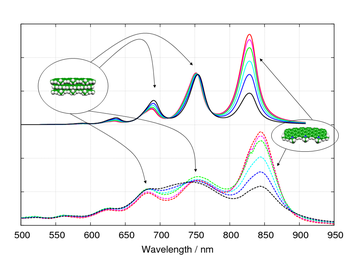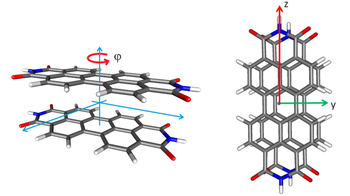
Molecular aggregates show optical properties usually different from those of the corresponding isolated molecules. According to spectroscopic properties their are classified either as H or J aggregates. The role of charge transfer states is believed to have considerable importance in energy transfer processes in photovoltaic cells or other devices based on organic materials.
